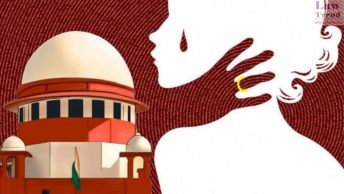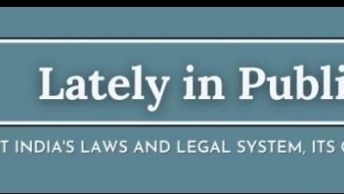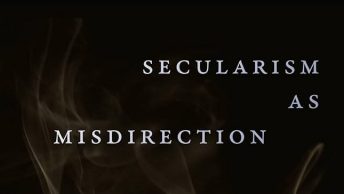To those who are sceptical of the value of lawblogs, the decision of the University of Chicago Law School to host a faculty blog where several prominent members of its reputed faculty would contribute regularly, must have come as a surprise. This is an important development in legal scholarship, coming soon after the University of Chicago Law School’s faculty was ranked first in the area of ‘faculty quality based on scholarly impact (per capita citations to faculty scholarship)’ in the influential rankings compiled by Professor Brian Leiter for the year 2005. Starting from Sep 2005, the Faculty Blog (as it is titled) has quickly developed a vast audience within the blogosphere, and is referenced by a number of leading law blogs. Since mid-October, Martha Nussbaum has been penning a series of pieces on Democracy in India, which are part of a forthcoming book. While earlier pieces focused on the Gujarat riots and their implications for Indian democracy and world affairs in general, they appear to be directed at an American audience, and have few new insights to offer to Indians who are familiar with the facts and the views expressed (speaking for myself, I found them a bit trite). Nussbaum posted the fifth instalment in the series posted earlier today. In it, she pursues a fascinating line of enquiry and reasoning: One way of understanding the choices before India today is to think of the nation’s choice of national anthems. At the time of Independence, and ever since, two different poems have been competing for this coveted spot. The losing candidate in 1947, now vociferously championed, once again, by the Hindu Right, is a song known as “Bande Mataram,” “Hail Motherland,” written by the Bengali novelist Bankimchandra Chatterjee. … … … The current national anthem of India, adopted on January 24, 1950, is a song whose words and music were both written by Tagore. As one of the earliest critics of Bande Mataram, he deliberately constructed an alternative vision of national unity and national devotion (although of course, writing long before Independence, he did not write the song as the future national anthem). … … … The song, then, is addressed to the divine, understood as a universal human spirit of morality and justice. This spirit rules “all people” everywhere in the world, and it is also “dispenser of India’s destiny.” Tagore makes it plain that this spirit animates the emotions of people in all of India’s diverse ethnic and geographical regions: all are equally animated by the love of rightness and justice, and parts of the nation are equally under this spirit’s care. (Some of these regions, at the time, were predominantly Muslim and some Hindu, some inhabited by Tamil/Dravidian people and some by speakers of languages descended from Sanskrit. Tagore pointedly includes them all.) There is no mention of military force or violence; instead, the “dispenser of India’s destiny” is the moral law, and it is the victory of justice for which Indians ask when they sing it. It is rare that a nation has a national anthem that expresses the idea that humanity is above nationality, and righteousness above aggression. But the idea of a moral law that unswervingly guides our destiny is deeply rooted in Indian traditions, more deeply perhaps than it is in Euro-American traditions, where such ideas are associated with a critical and counter-traditional Enlightenment intelligentsia rather than with traditional religion. Indians connect these ideas to many sources, but prominently to the concept of dharma, or right, in ancient Hindu texts. Tagore’s take on the traditional concept is humanist and critical, but it also resonates with much that already animates India’s traditional sense of its unity; no doubt this is why has been able to win wide acceptance. “Jana Gana Mana” is no pallid Kantian fantasy of what a rational national anthem should be. It is a beautiful song, beautiful in both its poetry and its music, and it is sung with great passion by Indians all over the nation (and abroad). They resonate not only to its invocation of the natural beauty of the nation and its rich regional and ethnic diversity, but also to the idea that there is a spirit of right that rises above wrong and injustice, a very important thought for a formerly colonized people. The hero in Tagore’s novel did not know how to use poetry to express his humanist vision; that was his great weakness. But Tagore himself, like Walt Whitman, did know how to create a public poetry of inclusiveness and moral commitment. It is not surprising, however, that a certain type of nationalist would not be satisfied. Supporters of a more aggressive nationalism keep returning to Chatterjee for a more tough-mindedly “masculine” conception of the nation and its pride. We might say that the struggle to be depicted in these posts and my book is just this struggle: between two visions of patriotism, two visions of the nation, two visions of masculinity.” The piece contains English translations of both “Vande Mataram” and “Jana Gana Mana”, which, I suspect, will be useful for non-Bengali Indians who know the words of both songs but remain ignorant about the specific meaning of individual words. (Many Indians of my generation will perhaps identify “Vande Mataram” with AR Rahman’s stirring version, which just goes to show the importance of popular culture in reifying ideas of national identity – but that is the subject of a future post). Nussbaum has had a long acquaintance with India and has also published pieces on a variety of issues in India, including some on the women’s rights movement, and the related role of the judiciary in India. Her Wikipedia entry (while a little too gossipy for my taste) succinctly describes her long collaboration with Amartya Sen on the “capabilities approach”. For those intrigued by her ideas, here is a link to a longer piece where she elaborates on the dichotomies of patriotism and cosmopolitanism.







According to the law of India,National Anthem of India is to be taken into severe action. This helps to keep up the respect towards the nation.